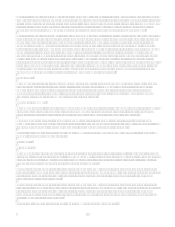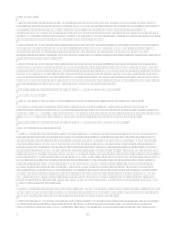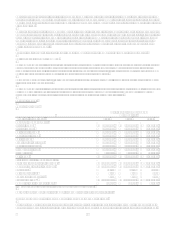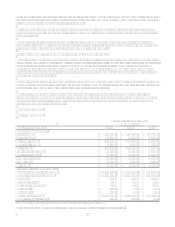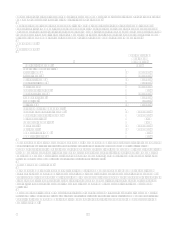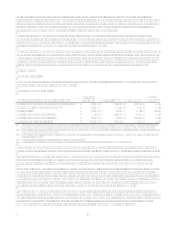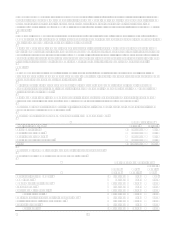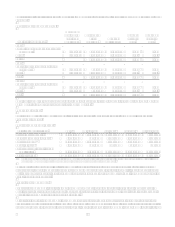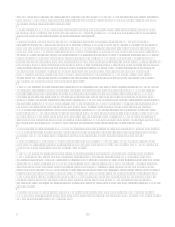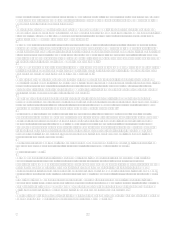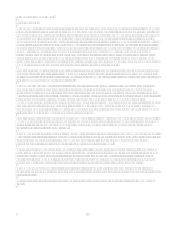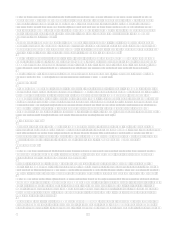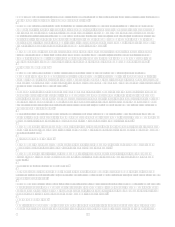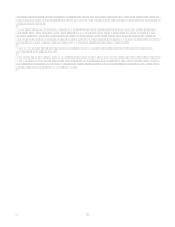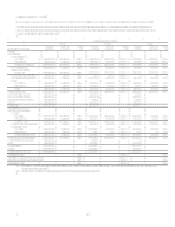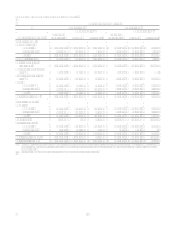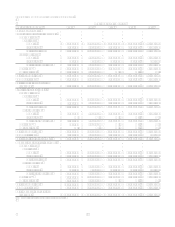Capital One 2006 Annual Report Download - page 67
Download and view the complete annual report
Please find page 67 of the 2006 Capital One annual report below. You can navigate through the pages in the report by either clicking on the pages listed below, or by using the keyword search tool below to find specific information within the annual report. 49
of December 31, 2006, the Corporation, the Bank, the Savings Bank, CONA and COAF collectively had over $ 12.1 billion
in unused commitments under various credit facilities (including the Collateralized Revolving Credit Facility) and unused
conduit capacity available for liquidity needs.
Additionally, the Company maintains a portfolio of highly rated and highly liquid securities in order to provide adequate
liquidity and to meet its ongoing cash needs. As of December 31, 2006, the Company had $10.7 billion of such securities,
cash and cash equivalents, net of pledged securities of $9.5 billion.
As discussed in Off-Balance Sheet Arrangements, a significant source of liquidity for the Company has been the
securitization of consumer loans. As of December 31, 2006 the Company funded approximately 34% of its managed loans
through on and off-balance sheet securitizations. The Company expects to securitize additional loan principal receivables
during 2007. The Companys securitization program has maturities in 2007 and through 2025. The revolving securitizations
have accumulation periods during which principal payments are aggregated to make payments to investors. As payments on
the loans are accumulated and are no longer reinvested in new loans, the Companys funding requirements for such new
loans increase accordingly. The occurrence of certain events may cause the securitization transactions to amortize earlier than
scheduled, which would accelerate the need for funding. Additionally, this early amortization could have a significant effect
on the ability of the Bank and the Savings Bank to meet the capital adequacy requirements as all off-balance sheet loans
experiencing such early amortization would have to be recorded on the balance sheet and accordingly would require
incremental regulatory capital. As such amounts mature or are otherwise paid, the Company believes it can securitize
additional consumer loans, gather deposits, purchase federal funds and establish other funding sources to fund new loan
growth, although no assurance can be given to that effect.
The Company is a leading issuer in the securitization markets. If these markets experience difficulties the Company may be
unable to securitize its loan receivables or to do so at favorable pricing levels. Factors affecting the Companys ability to
securitize its loan receivables or to do so at favorable pricing levels include the overall credit quality of the Companys
securitized loans, the stability of the market for securitization transactions, and the legal, regulatory, accounting and tax
environments governing securitization transactions. If the Company was unable to continue to securitize its loan receivables
at current levels, the Company would use its investment securities and money market instruments in addition to alternative
funding sources to fund increases in loan receivables and to meet its other liquidity needs. The resulting change in the
Companys current liquidity sources could potentially subject the Company to certain risks. These risks would include an
increase in the Companys cost of funds, an increase in the allowance and the provision for loan losses as more loans would
remain on the Companys consolidated balance sheet, and limited or no loan growth, if the Company were unable to find
alternative and cost-effective funding sources. In addition, if the Company could not continue to remove the loan receivables
from the balance sheet the Company would possibly need to raise additional capital to support asset growth.
Based on past deposit activity, the Company expects to retain a portion of its deposit balances as they mature. Therefore, the
Company anticipates the net cash outflow related to deposits within the next year will be significantly less than reported in
Table 8. The Company utilizes deposits to fund loan and other asset growth and to diversify funding sources.
Core deposits are comprised of domestic non-interest bearing deposits, NOW accounts, money market deposit accounts,
savings accounts, certificates of deposit of less than $100,000 and other consumer time deposits. The Company maintains a
Grand Cayman branch for issuing Eurodollar time deposits.
The Company has deposits that are obtained through the use of a third-party intermediary. Included in these deposits at
December 31, 2006, were brokered deposits of $12.0 billion, compared to $11.4 billion at December 31, 2005. These
deposits represented 14% and 24% of total deposits at December 31, 2006 and 2005, respectively. If these brokered deposits
are not renewed at maturity, the Company would use its investment securities and money market instruments in addition to
alternative funding sources to fund increases in loan receivables and meet its other liquidity needs. The Federal Deposit
Insurance Corporation Improvement Act of 1991 limits the use of brokered deposits to well-capitalized insured depository
institutions and, with a waiver from the Federal Deposit Insurance Corporation, to adequately capitalized institutions. At
December 31, 2006, the Bank, the Savings Bank, CONA, North Fork Bank, and Superior and the Corporation were well-
capitalized as defined under the federal bank regulatory guidelines. Based on the Companys historical access to the
brokered deposit market, it expects to replace maturing brokered deposits with new brokered deposits or with the Companys
direct deposits.
Other funding programs established by the Company include senior and subordinated notes. At December 31, 2006, the
Company had $9.7 billion in senior and subordinated notes outstanding that mature in varying amounts from 2007 to 2027, as
compared to $6.7 billion at December 31, 2005.


